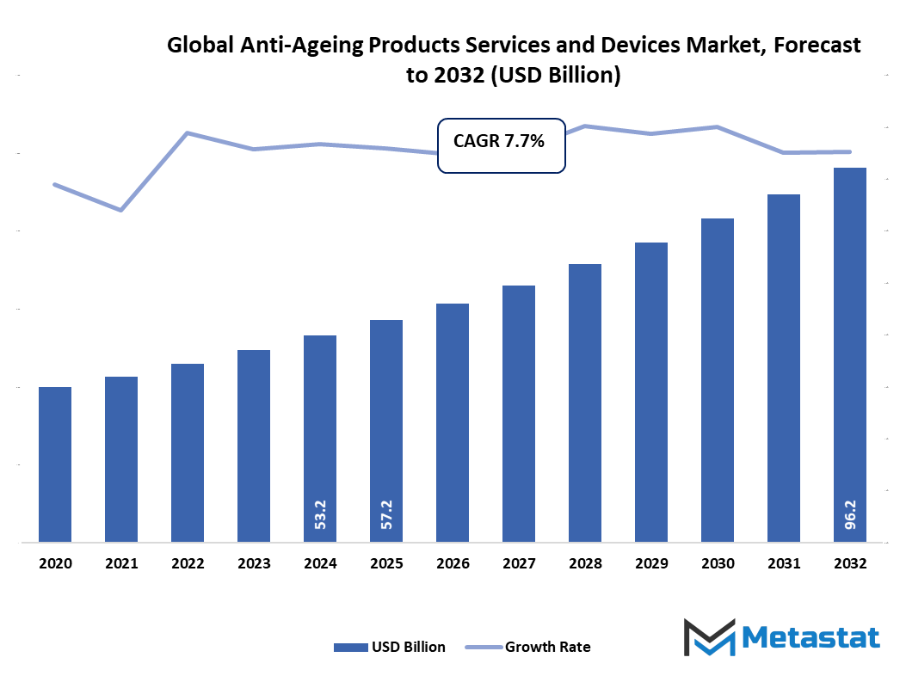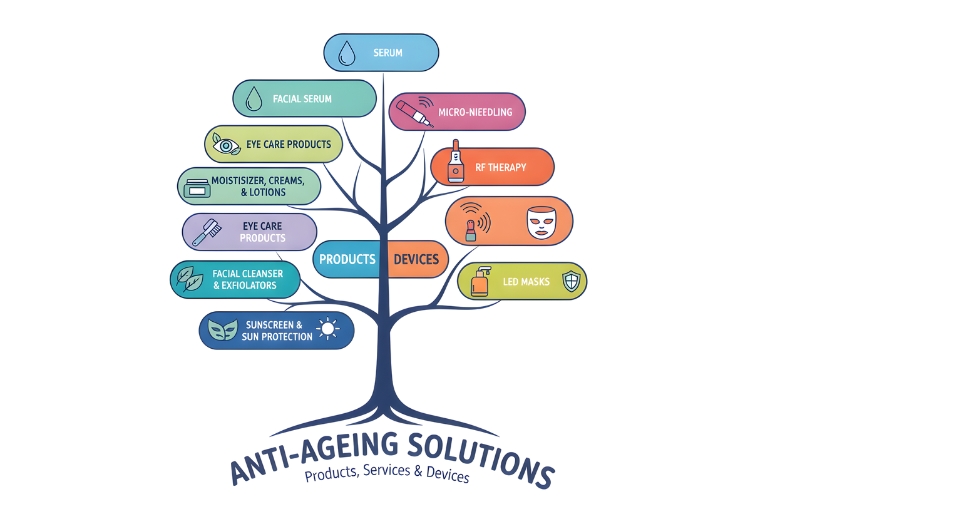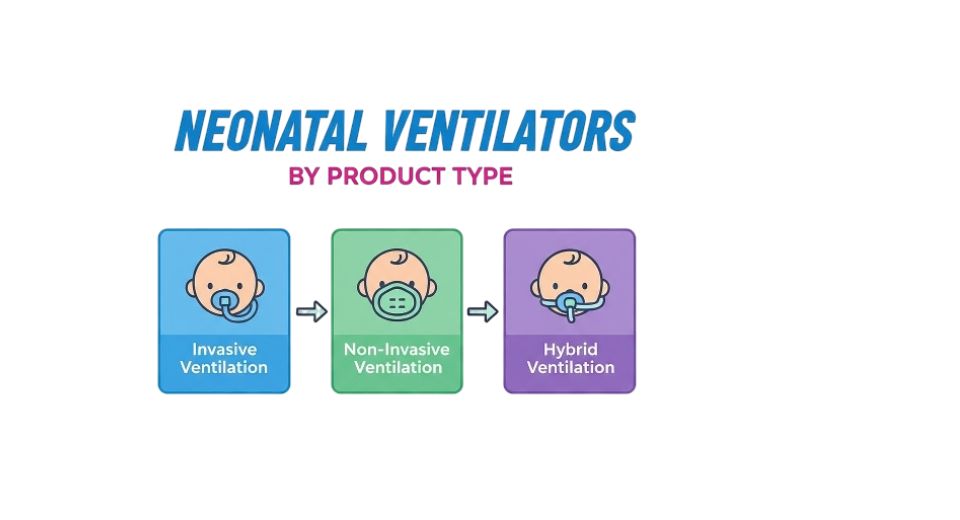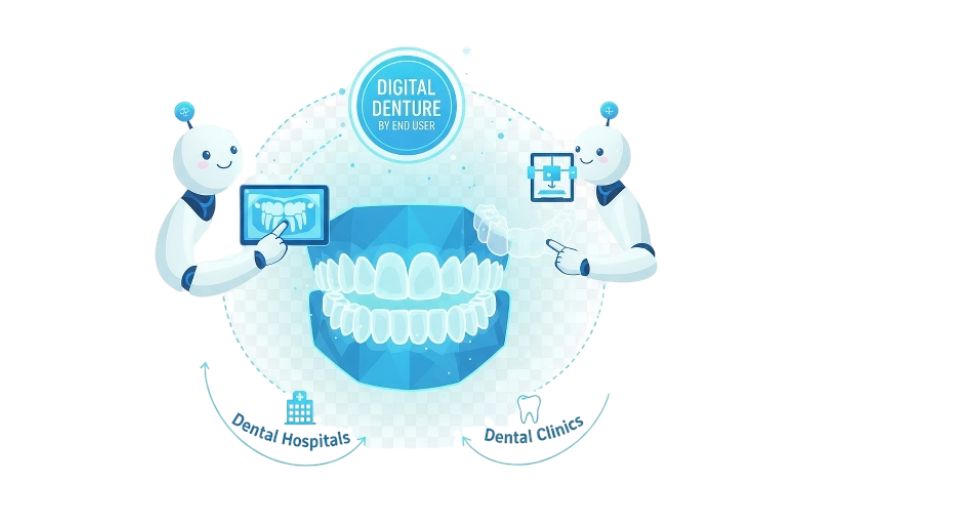Global Anti-Ageing Products Services and Devices Market - Comprehensive Data-Driven Market Analysis & Strategic Outlook
The global anti-ageing products services and devices market will not be limited to traditional skincare solutions but rather take a more comprehensive and holistic approach to longevity and wellness. The sector will not be about creams or serums that superficially cover signs of ageing but will move to biologically targeted technology-driven solutions that address ageing at its core. With continuous research into cellular health and regeneration, the next innovations will probably represent a merger of dermatology, genetics, and biotechnology to provide a more individualized ageing management approach.
- The global anti-ageing products services and devices market valued at approximately USD 57.2 Billion in 2025, growing at a CAGR of around 7.7% through 2032, with potential to exceed USD 96.2 Billion.
- Facial Serum account for nearly 23.6% market revenues, driving innovation and expanding applications through intense research.
- Key trends driving growth: Rising consumer awareness about personal appearance and age-related skincare., Growing demand for minimally invasive and non-surgical anti-ageing treatments.
- Opportunities include Technological innovations in anti-ageing devices and biologically active skincare formulations.
- Key insight: The market is set to grow exponentially in value over the next decade, highlighting significant growth opportunities.

In what ways will innovations in biotechnology and personalized skincare change the global anti-ageing products services and devices market to a great extent? Could a massive consumer preference for natural and non-invasive treatments to be the reason of a complete change in the nature of the anti-ageing methods? And if the pace of the technological breakthrough is very high, will it be possible that these new developments will occur before the regulations are ready and that, therefore, the competitive landscape will change radically?
The market will undergo a metamorphosis over the next few years in terms of how ageing is considered by consumers. The main point will no longer be just postponing the physical signs but rather sustaining overall health and self-confidence. Anti-ageing equipment will have greater functionalities, as they will make use of AI and real-time diagnostics to evaluate skin conditions and provide treatment options that best fit the user and can be administered in home. On the other hand, health care services will elevate their standards by implementing cutting-edge non-invasive methods, thus, yielding immediate and visible results without the need for rest hours traditionally associated with cosmetic procedures.
Market Segmentation Analysis
The global anti-ageing products services and devices market is mainly classified based on Product, Distribution Channel.
By Product is further segmented into:
- Facial Serum
The global anti-ageing products services and devices market will see a major trend of facial serums containing active ingredients that naturally stimulate collagen production and make the skin more elastic. Scientists will work on finding ingredients that provide light and fast-absorbing solutions, which target wrinkling and even skin tone, thus offering consumers effective and luxurious skincare products.
- Moisturizer, Creams, & Lotions
Moisturizers, creams, and lotions will still be the main elements of the market. New formulations will focus on permanent hydration and cell renewal, while the use of natural and certified ingredients will gain popularity due to increased awareness of skin care and environment.
- Eye Care Products
Demand for cutting-edge eye-care products is expected to rise in the market as consumers strive forquick and effective treatments for dark circles, puffiness, and fine lines. The arrival of peptide-enriched gels and lightweight creams will make the eye care us more targeted and scientific approach.
- Facial Cleanser & Exfoliators
The change of facial cleansers and exfoliants in the global anti-ageing products services and devices market will revolve around gentle products that effectively remove dirt without damaging the skin's natural barrier. These products will use mild acids, fruit enzymes, and moisturizers to give users soft and radiant skin without the risk of irritation.
- Facial Masks & Peels
Mask and peel products will take a leap in the market in terms of technology and nutrition, delivering immediate effects and deep nourishment. The use of vitamin- and antioxidant-enriched sheet, clay masks, and chemical peels will not only help smooth the skin and even the colour, but also bring back the youthful glow.
Sunscreen & Sun Protection
- Products for protection against the sun and sunscreens are going to be the main categories of the global anti-ageing products services and devices market. Due to the growing concern about the skin changes caused by UV rays, sunscreens of tomorrow are to be increasingly offering multifaceted formulas that, along with a broad spectrum of protection, provide protection against blue-light, hydration, and anti-pollution defense.
By Distribution Channel the market is divided into:
- Supermarkets & Hypermarkets
Stores of neighbourhood and big cities will continue to be the major places where consumers of the global anti-ageing products services and devices market purchase their products, such as in supermarkets and hypermarkets. Shoppers will have better access to the latest in anti-aging through attractive product displays, special pricing offers, and in-store events led by qualified staff who can answer their questions and guide them to the right choice.
- Pharmacy/Drugstores
Pharmacies and drugstores will continue to be trusted places to look for dermatologically tested products in the market. Shoppers will make such purchases in these stores for skincare professional treatments and guidance from the experts, thus resulting in the growth of medically approved anti-ageing product lines.
- Specialty Beauty Stores
The fame of the specialty beauty retailers will boost due to the personalized consulting and unique brands they provide to the customers in the global anti-ageing products services and devices market. The experience will become more of an interactive style of shopping, where the customer explores tailor-made treatments and product-trials to elevate their skincare routine.
- Online/E-commerce
Channels that operate on the Internet and e-commerce will be the winners of the market. The main reasons for this are the increasing digitization of consumer habits and the various advantages offered in this respect. Virtual instruments for skin tests, automated recommendations, and super-fast delivery routes will make the customers' choice of the online channel as inevitable as it will be for them to be spoiled for options and convenience.
- Others
Other channels of the global anti-ageing products services and devices market are represented by the spaces where one relaxes and cares for oneself – spas and salons – and the direct-to-consumer business model. These means will be able to bridge the gap between taking care of oneself at home and visits to the doctor, thus granting consumers access to advanced anti-aging benefits through complex service bundles.
|
Forecast Period |
2025-2032 |
|
Market Size in 2025 |
$57.2 Billion |
|
Market Size by 2032 |
$96.2 Billion |
|
Growth Rate from 2025 to 2032 |
7.7% |
|
Base Year |
2024 |
|
Regions Covered |
North America, Europe, Asia-Pacific, South America, Middle East & Africa |
Geographic Dynamics
Based on geography, the global anti-ageing products services and devices market is divided into North America, Europe, Asia-Pacific, South America, and Middle East & Africa. North America is further divided in the U.S., Canada, and Mexico, whereas Europe consists of the UK, Germany, France, Italy, and Rest of Europe. Asia-Pacific is segmented into India, China, Japan, South Korea, and Rest of Asia-Pacific. The South America region includes Brazil, Argentina, and the Rest of South America, while the Middle East & Africa is categorized into GCC Countries, Egypt, South Africa, and Rest of Middle East & Africa.

Competitive Landscape & Strategic Insights
The global anti-ageing products services and devices market has been identified as the largest one of the top sectors in the beauty and wellness industries. To sustain their youthful looks and to improve their skin, people all over the world are in a constant search of such products. Hence companies are spending heavily on innovations, technology and research. In general, the market is a home of beauty and skin care products with several types of salon services and some most advanced faceless aging gadgets to get rid of the aging symptoms such as wrinkles, fine lines, or skin discoloration. As the consumer engagement as a result of awareness of self-care, inclusion of high-end beauty products in the daily routine, and effect of social media trends continues to rise gradually, so does this market industry.
The industry is a brilliant cocktail of global giants and regional actors with fresh ideas and revolutionary inventions. Unilever PLC, L'Oréal S.A., Beiersdorf AG, The Procter & Gamble Company, The Estée Lauder Companies Inc., and Shiseido Company, Limited are the main contributors to this industry. These companies are characterized by their comprehensive product lines and strongholds all over the world. Besides these, the companies such as Avon Products, Inc., Oriflame Holding AG, and Revlon, Inc. are in the business of providing affordable luxury products for the wider market to anti-aging solutions. Mostly their strategies combine top-notch marketing with revolutionary formulas for different skin types and lifestyles.
The influence of the technology companies on the market is also very significant as they come up with gadgets and treatments that supplement topical product usage. PMD Beauty (Age Sciences Inc.), Allergan, Inc., Alma Laser, Coty Inc., Cynosure, Lumenis, Photomedex, Solta Medical, and Personal Microderm (PMD) are some of the companies that are reinventing the concept of skincare for consumers. Whether it is home microdermabrasion devices or professional lasers, these companies are fusing science and beauty in a way that delivers visible results. The growing trend of beauty treatments and the convenience of at-home devices have made these products attractive to people of all age groups.
Innovation continues to be the main factor that attracts this market alongside lifestyle and consumer preference changes. Consumers keep demanding that manufacturers provide safe, effective, and ethically made products and are choosing products that meet these criteria. This trend pushes companies to make more products with cleaner formulations, sustainable packaging, and animal testing-free. The next generation of anti-ageing products, to be fair, coming from the fusion of science and consumer health, is thus turning the issue into one of skin health and not just beauty and the gaining of confidence over time.
In the coming years, the global anti-ageing products services and devices market is going to be very vibrant as companies strive to gain consumers' trust and loyalty through authenticity, quality, and effectiveness. The future of this market is extremely bright with the top players extending their reach globally and new players coming up with fresh ideas. Whether it is through advanced technologies or nature-inspired skincare brands, the main focus will still be on delivering effective, affordable, and safe products that enable consumers to maintain their youth and self-confidence throughout their lives.
Market Risks & Opportunities
Restraints & Challenges:
Exorbitant price of sophisticated anti-ageing treatments and instruments
The global anti-ageing products services and devices market is expected to remain hampered by the high expenditures that characterize the associated treatments and technologies. On the one hand, luxurious products and implements will require a staggering amount of investments in research, apparatus, and skilled labour and, thus, be beyond the scope of the broad base of consumers. The issue of price will predominantly determine the extent of the product/service accessibility and thus, its consumption will be confined mainly to the already existing groups of users in developing markets, which will consequently lead to market stagnation in those regions.
Risk of side effects and product safety issues among consumers
Besides that, the worldwide Market for Anti-Aging Products, Services, and Devices will also be limited by serious concerns in product safety and the occurrence of side effects that are raised continually. This trend will force users to be more cautious as regards applying invasive treatments, and also specially manufactured chemical products and new ingredients. Tighter regulations and consumer trust taking into consideration health issues will control consumer behavior and lead to the demand for refreshingly safe, clinically tried, and tested solutions in the future.
Opportunities:
Technological breakthroughs in anti-ageing equipment and biologically active cosmetic preparations
There are a wide range of opportunities that will significantly affect the global anti-ageing products services and devices market positively and these can be attributed to technological advancements and the rise of bio-active skincare innovations. The upcoming reality of AI assistance in diagnosis, the use of nanotechnology in the implementation of the delivery system, and the use of regenerating agents will change the effectiveness of the treatments. Medical professionals as well as end-users will warmly embrace these advancements as they appear safer, more scientific, and result-oriented. Continued breakthroughs in the sector will put skincare on the pedestal of being a much more personal and preventive practice, thus, the market will have enormous potential long-term globally.
Forecast & Future Outlook
- Short-Term (1–2 Years): Recovery from COVID-19 disruptions with renewed testing demand as healthcare providers emphasize metabolic risk monitoring.
- Mid-Term (3–5 Years): Greater automation and multiplex assay adoption improve throughput and cost efficiency, increasing clinical adoption.
- Long-Term (6–10 Years): Potential integration into routine metabolic screening programs globally, supported by replacement of conventional tests with advanced biomarker panels.
Market size is forecast to rise from USD 57.2 Billion in 2025 to over USD 96.2 Billion by 2032. Anti-Ageing Products Services and Devices will maintain dominance but face growing competition from emerging formats.
Moreover, consumer lifestyle and wellness brands will significantly influence the same market by advocating that topics such as emotional well-being, nutrition, and preventive care are not only integral to the ageing process but also age management essentials. Besides, The global anti-ageing products services and devices market will extend its reach through digital health platforms, which empower individuals with the ability to effortlessly monitor and control their ageing process with great accuracy. Once being primarily a concern of the beauty industry, ageing will be lifestyle-driven and thus will be easily supported through innovation, science, and inclusiveness.
Report Coverage
This research report categorizes the global anti-ageing products services and devices market based on various segments and regions, forecasts revenue growth, and analyzes trends in each submarket. The report analyses the key growth drivers, opportunities, and challenges influencing the global anti-ageing products services and devices market. Recent market developments and competitive strategies such as expansion, type launch, development, partnership, merger, and acquisition have been included to draw the competitive landscape in the market. The report strategically identifies and profiles the key market players and analyses their core competencies in each sub-segment of the global anti-ageing products services and devices market.
Anti-Ageing Products Services and Devices Market Key Segments:
By Product
- Facial Serum
- Moisturizer, Creams, & Lotions
- Eye Care Products
- Facial Cleanser & Exfoliators
- Facial Masks & Peels
- Sunscreen & Sun Protection
- Others
By Distribution Channel
- Supermarkets & Hypermarkets
- Pharmacy/Drugstores
- Specialty Beauty Stores
- Online/E-commerce
- Others
Key Global Anti-Ageing Products Services and Devices Industry Players
- Unilever PLC
- L’Oréal S.A.
- Beiersdorf AG
- The Procter & Gamble Company
- The Estée Lauder Companies Inc.
- Shiseido Company, Limited
- Avon Products, Inc.
- Oriflame Holding AG
- Revlon, Inc.
- PMD Beauty (Age Sciences Inc.)
- Allergan, Inc.
- Alma Laser
- Beiersdorf AG
- Coty Inc.
- Cynosure
- L’Oréal SA
- Lumenis
- Photomedex
- Personal Microderm (PMD)
- Solta Medical, Inc.
WHAT REPORT PROVIDES
- Full in-depth analysis of the parent Industry
- Important changes in market and its dynamics
- Segmentation details of the market
- Former, on-going, and projected market analysis in terms of volume and value
- Assessment of niche industry developments
- Market share analysis
- Key strategies of major players
- Emerging segments and regional growth potential








 US: +1 3023308252
US: +1 3023308252






